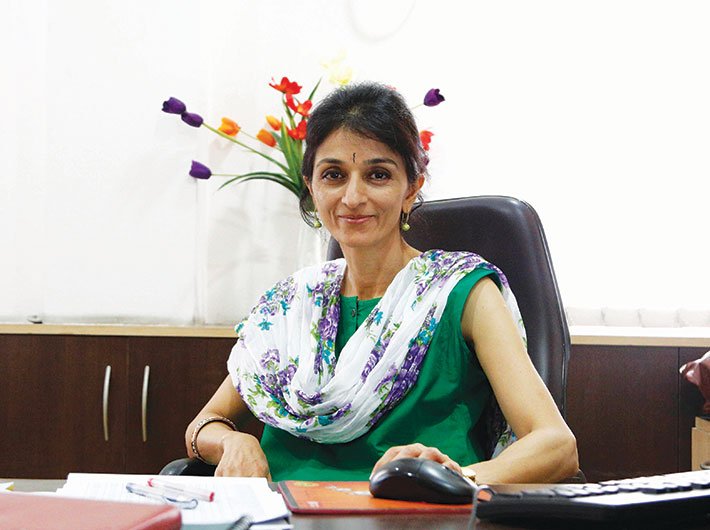Indira Iyer, a senior fellow at the National Council for Applied Economic Research (NCAER), has been studying financial inclusion. In her paper, ‘Financial inclusion in India: Why distinguishing between access and use has become even more important’, she suggests that in India “by the very definition of financial inclusion, the focus of the rhetoric has primarily been on access to these services according to a set of various indicators like the percent of households having a bank account or the number of bank branches per 1,00,000 population.” She, however, points out that “equally important is the share of individuals and firms who use financial services”. Speaking with Shishir Tripathi, she gives an economist’s perspective on the Jan-Dhan Yojana. Edited excerpts from the interview:
On equal importance of demand and supply sides
Financial inclusion has two parts. The Rangarajan committee defines it as “universal access of financial services by the poor and disadvantaged people at an affordable cost”. If we define it that way, the opening of accounts is very good; no question regarding that. However, one should try and distinguish between the supply side and demand side. There is greater success if we view it from the supply side indicators. For instance, by and large, we do achieve numerical targets in the opening of bank accounts. But if we look at it from the demand side, the rationale for financial inclusion is essentially to ensure cheap credit. So just opening bank accounts does not ensure that people use these accounts. We have to ensure that these accounts are used.
In times of financial stress there might not be enough instruments that can help people tide over it. We have to ensure that there are appropriate financial instruments at the disposal of the more needy, which can be used at the time of financial emergencies.
Both these aspects work in tandem; you cannot ensure one without the other. By providing suitable instruments and greater targeting we can ensure that these accounts are effectively used for the reasons they are opened, that is, to give affordable credit as well as motivate people to save and invest.
The question as to who saves and invests and who needs affordable credit is also very important. These issues have to be addressed along with the opening of the accounts.
On the need for tailor-made products
We are looking at the bottom 40 percent of the population. Most of them are casual wage labourers so they require a different set of products. You need to know whether they can actually save and invest and how much, and accordingly provide them products and services that suit their requirements and financial capabilities.
Again, opening of accounts is a good thing. The MNREGA money goes into their accounts and they withdraw it. But it is a one-time withdrawal, every time. This cannot be called financial inclusion in real terms.
On the basis of many surveys and reports you can find out that most of the small and marginal farmers borrow from moneylenders at exorbitant rates. There is dependence on moneylenders because credit is easily available from them and the repayment period is flexible even if it comes at a higher cost. So the products that sort of mimic that flexibility and availability that the moneylender provides would be something that will appeal to these people. Providing the crop insurance cover would be one example.
According to NCAER’s NSHIE survey, the first response of the poor in financial emergency is to go to a moneylender. According to this survey, 58 percent farmers go to moneylenders to meet medical expenses. So you should consider giving them some form of medical insurance.
There should be some mechanism that can save the bottom 40 percent from risk and then there should be some mechanism that can help them save and invest. The important question is how far these accounts can be used to provide the safety net to these people.
On overdraft as microfinance
The way microfinance functions, it has some very good principles. You have a group and the group has peer pressure and common goals. So the self-help groups (SHG) which are well designed have evidence of higher repayment and higher increase in the income of the poor. If you can provide overdrafts of a substantial value to the SHGs, it can actually work as a cushion.
The purpose of the SHG is to develop a business venture. To have a cushion is in a way good. It can help the SHGs to tide over any crisis in the business cycle. However, just giving overdraft will not solve the problem. If the idea is to help people tide over the business crisis, then we have to think differently.
Banks find it easier to lend to SHGs. Adverse selection and moral hazard is reduced, so they give loans at lower rates. Overdraft also can be used to help these SHGs. But again there should also be enough motivation and incentives to pay back. So the ‘overdraft facility’ has to be designed in a way that it can help the SHGs in their business but at the same time it does not create problems for the banks.
On viability of the scheme
The onus is primarily on public sector banks to open accounts. There is a cost to opening and maintaining accounts. If people use the accounts it will pan out in a way that will be beneficial for both, people and banks. But if the accounts are going to lie dormant it will, of course, create financial stress.
On revising the BC model framework
There is huge trust deficit for the business correspondents (BCs). In a survey conducted by InterMedia in 2013, it was found that almost 97 percent of the respondents did not trust the BCs. Actually it is a genuine problem. If the person who took your money is absent, then how can you be sure that your money is safe? Currently, there are about 3.3 lakh BCs and this model certainly increases outreach in a more cost-effective way. However, in the long run there should be better incentives. Most BCs are people looking for some additional income. They do not have many incentives to stay in the business for long. On the other hand, moneylenders are always there, available whenever you require them, and people borrow from them despite their hefty charges.
There are no incentives to stay and cultivate business. For a significant number of BCs, the job as a BC is an additional business to supplement an existing income source. Sooner or later the BCs do a cost-benefit analysis and leave the job. It is found that almost 50 percent of the BCs at any given time are missing. The intention and the ideas behind the model are good as you can’t open branches everywhere, but the recipe needs some more work.
shishir@governancenow.com
(The interview appears in the June 1-15, 2015 issue)

